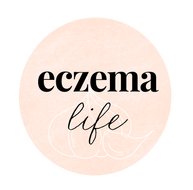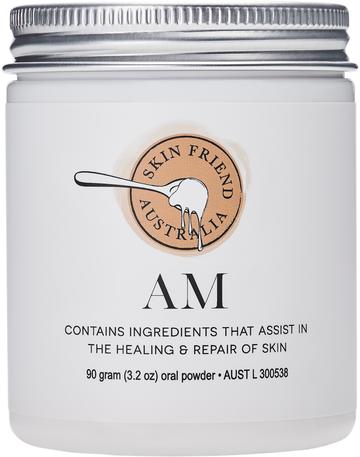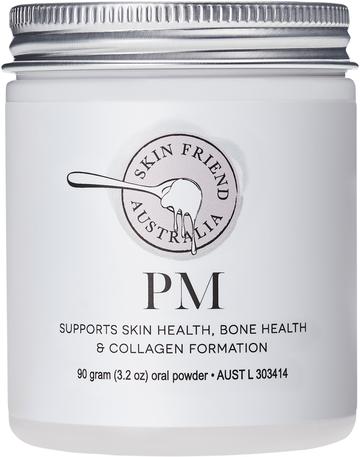Cradle Cap Natural Remedies

Children who have eczema or a family history of eczema are highly susceptible to developing cradle cap, which is a form of scalp dermatitis also known as childhood seborrhoeic eczema.
It’s not caused by poor hygiene and it’s not contagious. What occurs is the sebaceous glands in the infant’s skin become inflamed and produce excess oil. The oil traps the skin as it sheds and forms thick yellow crusts (or a "cap") on the scalp. It can appear quite suddenly between two to six months of age.
Cradle cap predominantly affects babies during their first few months of life however if untreated it can persist until the age of three and, very rarely, beyond three years. Unlike eczema, cradle cap is not itchy and it does not usually cause babies discomfort. On saying this, some children do find their scalp becomes itchy and they scratch their scalp (see photo, above). There is a simple cradle cap treatment plan using natural remedies, below.
Symptoms of cradle cap
Symptoms of cradle cap include:
- reddening of the skin
- greasy scalp
- thick yellow crusts that look like scabs/scales/flakes
- mild discomfort
- mild hair loss
- inflammation with small blisters that eventually pop and weep, and
- your child might appear to be unwell (if this occurs, see your doctor)
What causes cradle cap?
Cradle cap can be caused by a number of factors, including:
- genetics (blood relatives are likely to have eczema and/or asthma
- overactive sebaceous glands (from maternal hormones), and
- it may appear in conjunction with seborrheic dermatitis which is elsewhere on the body
Note: Cradle cap can become infected. Look for symptoms such as increased redness and inflammation and your child might appear unwell. Cradle cap does not improve when it's infected and medical treatment is advised. If you suspect a skin infection see your doctor for diagnosis and treatment.
Cradle cap natural remedies
This is a two-step management plan for babies and children with cradle cap, from The Eczema Diet
Step 1: Change shampoo and use it often
Sulfates are foaming agents commonly used in shampoos, bubble bath and body washes, and this ingredient can trigger inflammation of the scalp. Problematic sulfates include sodium lauryl sulfate (SLS) and sodium laureth sulfate which is slightly milder but still irritating to the scalp. Unfortunately sodium laureth sulfate is in many commercial baby shampoos.
Step 1 involves finding a natural baby shampoo that is free of sulfates. Be suspicious if a children’s product foams and bubbles as it usually means sulfates are present. Also avoid coloured bath and skin products containing synthetic dyes and fragrances. You might need to visit your local health food shop to find a gentle baby shampoo (check the ingredients as some health food shops stock ‘natural’ and ‘gentle’ products that contain sodium lauryth sulfate). THEN gently shampoo your bub’s hair and scalp often to gently remove the cradle cap.
Note that it is not essential to wash your baby’s body with foaming cleansers or soaps as this can disrupt the pH of their skin. Babies can be adequately cleaned with water and a very soft cloth.
Step 2: Use oil
Use a suitable oil to massage your baby’s head, twice a week if necessary (you can do this when you are bathing him or her). Wash your hands with soap and rinse before massaging your babies scalp to avoid passing on bacteria which may cause the cradle cap to become infected.
Then loosen the crusts by very gently brushing the scalp in a circular motion with a very soft toothbrush or you can gently use a fine plastic toothcomb (not a metal one). Shampoo afterwards to remove the oil or most of it.
To loosen the flakes you can use oils such as:
- calendula oil (an ingredient diluted within a natural baby oil product such as Aromababy 'Mother and Child Massage Oil')
- flaxseed oil (can be used on its own)
- evening primrose oil (can be used on its own or in a product like Aromababy etc.)
- or as a last alternative try rice bran oil as it’s free of salicylates
My favourite choice is the evening primrose oil but use what suits your baby best.
AVOID olive oil and coconut oil and be cautious of almond oil as they are rich in salicylates and may cause adverse reactions if your baby has sensitivity to salicylates.TIPS ON FRESHNESS OF PRODUCTS ... Only use the freshest oils such as oils that are bought in capsules or recently purchased to ensure freshness - do not dip your fingers into pots of products to avoid cross-contamination from fingers.
IF YOUR BABY HAS ECZEMA ... First patch-test the oil on unbroken skin and wait 24-48 hours to see if a reaction occurs. When trying a new product or oil, if a reaction such as increased redness or inflammation occurs discontinue use.
Do not use products containing mineral oil and keep all oils out of reach of children.
Remember cradle cap is a temporary condition. Be gentle and patient when treating it and remove a little each day or every few days in order to minimise your baby's discomfort.
Products
At Eczema Life, we recommend nutritionist Karen Fischer's low food chemical program (The Eczema Detox) along with additive-free supplements for skin health and wellbeing. Click on the images to view more details:
Reference: Fischer, K., 2014, 'Cradle Cap Natural Remedies', edited extract from The Eczema Diet, Second Edition, Chapter 11, pp. 142-3.




